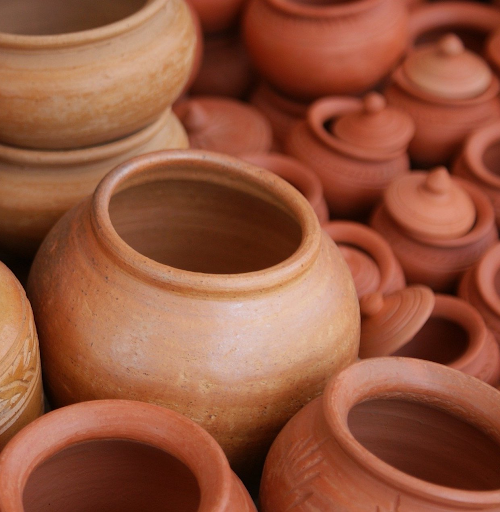December 13, 2022

By: AEOP Membership Council Members Harrish Ganesh, Aleesha Bhatti and Spoorthy Reddy
We’re surrounded every day by monetary items, distinct collectibles, and necessary pieces, and most of these objects are often what we handle with most care. We try not to drop things that might be precious, or we try to avoid ledges in case there is an unforeseen accident. But, something always breaks. Whether it’s your mom’s old vase or your new ceramic plates, ceramic is prone to breakage. Ceramics have ionic and covalent bonding between the atoms that significantly differ from, for example, bonds in metal alloys. Even though ionic and covalent atom bonds are among the strongest we know, ceramic is definitely not the strongest material out there. This is because while there are strong bonds, they prevent atoms from easily moving around. With atoms jam-packed in many of our prized possessions, the plasticity becomes low and therefore materials made out of ceramic are not able to change shape easily; instead they shatter. Recently, however, engineers and scientists studied a new method of developing ceramic objects which would result in a more pliable material. So, when that valuable vase or those fancy plates fall, they would remain strong and not shatter.
Engineers utilized studies regarding the chemical makeup of ceramic to catapult their research and experimentation and create a ductile and malleable alternative. In order to approach ductility, they first established that this characteristic would mean that the ceramic object would be able to be stretched more than a brittle or easily breakable object. This immediately took influence from a previous study in which researchers found that they could deform thin films of glassy alumina (Al2O3) with high strain rates at room temperature. This is crazy considering glass is a very fragile material because of its easy breakability. This study shed light on the fact that dense and flawless glassy alumina samples can deform this way, further influencing how the research in ceramics played out.
Another major point that many researchers and engineers took into account is that ceramic is already extremely strong because of its ionic and covalent bonds. With added pliability and plasticity, ceramic would be an indestructible, all around great material, or so they thought. Research looked promising initially while exploring one method of ductile ceramics using silicon nitride (Si3N4), one of the most versatile engineering ceramic materials, which can be made to exhibit plasticity at room temperature. Ceramics made with this compound would have a duplex structure at the common lattice interface to achieve continuous bond conversion, which would help induce phase transitions and ultimately produce plastic deformation capacity.
Silicon nitride ceramics are a well-used type of ceramic that have a wide range of capabilities. Silicon nitride ceramics contain a high-strength toughness and hardness with an impressive chemical and thermal stability. Developed in the mid-nineteenth century, it was not widely manufactured due to its covalently bonded nature. Because of its covalent nature, this led to the creation of two types of silicon nitride: reaction–bonded silicon nitride (RBSN) and hot pressed silicon nitride (HPSN). Later on, silicon nitride ceramics developed a larger family with the creation of silicon sintered silicon nitride (SSN), and sintered reaction–bonded silicon nitride (SRBSN). The malleable nature of silicon nitride ceramics have enabled them to be easily usable in common temperature settings and therefore have a wide range of uses (especially used in the formation of engines for automotive vehicles).
The demand for metallic bonding to be a part of ceramics has been increasing. Sensors, electronic packaging and power supplies aretechnologies that require the immersion of metallic bonding and ceramics. This can be done through adhesives, where multiple layers between metals and ceramics are put together, or with a soldering/braze attachment, in which the initial ceramic layer must be applied with metal. To form either of these through metallic bonding, various heating temperatures are used.
Therefore, malleable ceramics are an emerging field of ceramic technology that allows for a vast variety of products to be formed. From your car engines all the way to your food dishes, malleable ceramics have created more diverse forms of products that reduce the cost of manufacturing and require less energy output, which creates for a more green world. The future of ceramics only propels our daily life and manufacturing world to be cleaner, one product at a time.
Find a Volunteering Opportunity
Visit our Program Volunteers page for a tool to find the best opportunity for you.
eCYBERMISSION Mini-Grant
The eCYBERMISSION Mini-Grant is intended to support teachers/program leaders as they implement eCYBERMISSION with their teams. Educators (formal and informal) of students in grades 6-9 are encouraged to apply.
